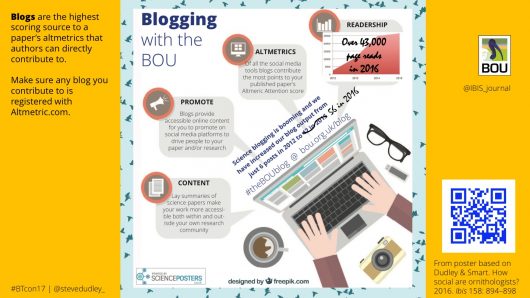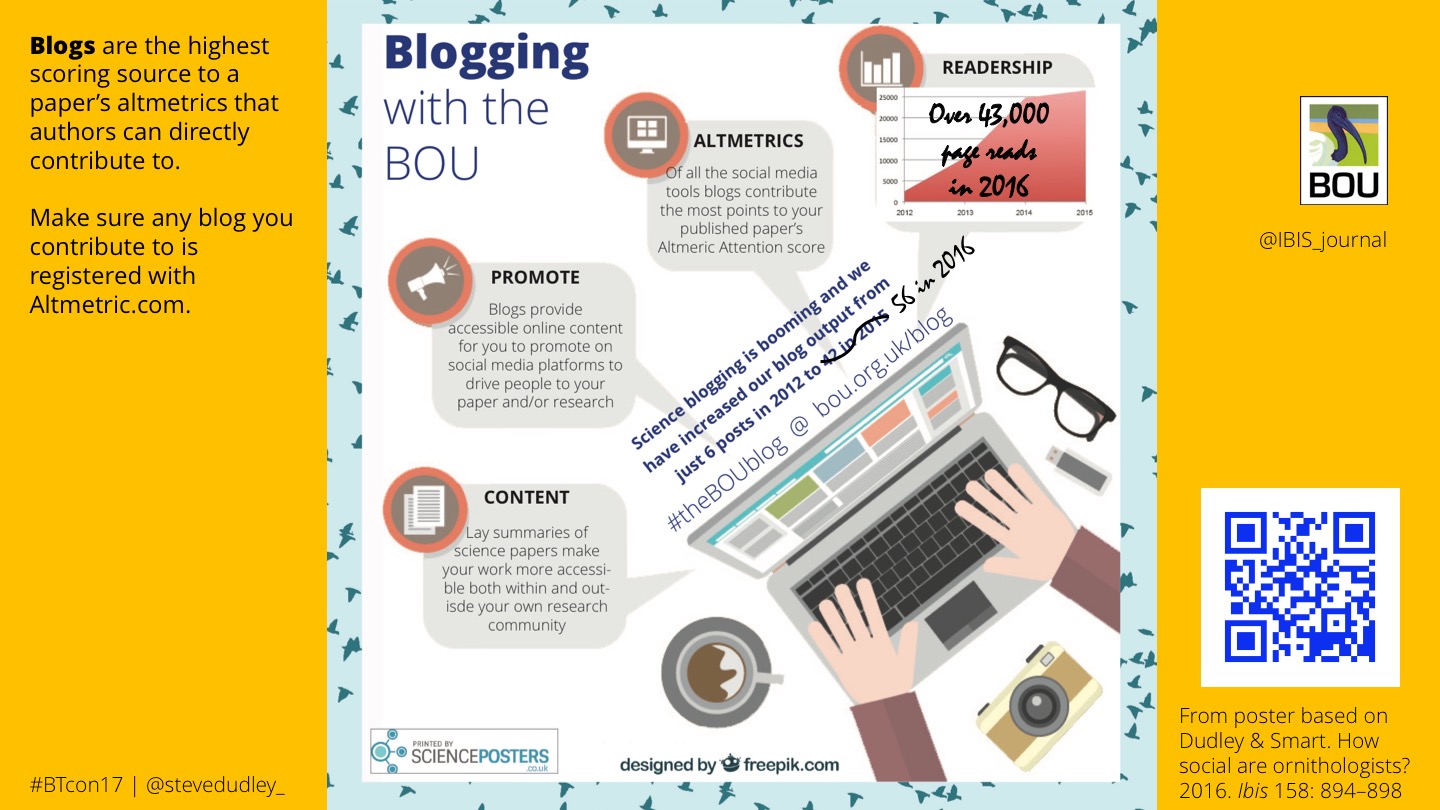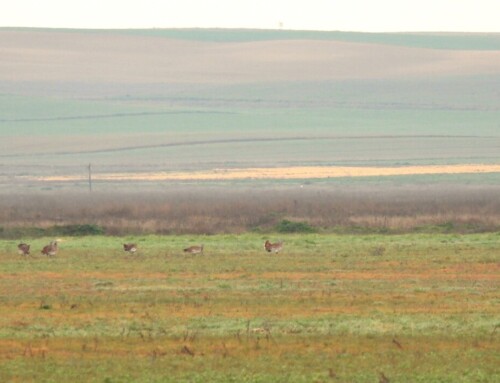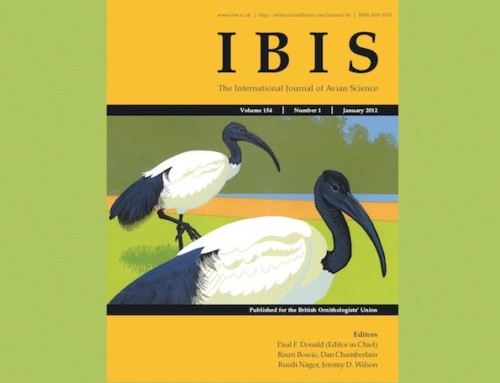Science blogging is on the increase, and with good reason. It gets your work noticed. Within ornithology, #theBOUblog has forged a reputation for delivering for both IBIS and other community authors.
In 2015, as a final year PhD student, I published my first paper in IBIS. It made the list of the top 10 most cited papers in the journal that year, and was popular with non-scientists too, mentioned by 54 Twitter users – 78% of whom were non-scientists – and the paper is currently in the top 5% of all research outputs scored by Altmetric (see here). Why has this paper received so much attention?
Shortly after ‘Light grazing of saltmarshes is a direct and indirect cause of nest failure in Common Redshank Tringa totanus‘ was accepted, I was asked to write a BOU blog about it. I must admit, I was initially sceptical; I had just a few weeks left to submit my PhD thesis and was working around the clock to finish the all important final changes. I was declining all other requests, to focus only on my thesis. However, having seen the response to my wife, Katrina Sharps’ BOU blog post, The secret lives of Nightjars, just a few weeks beforehand, I knew this was too good an opportunity to turn down. I went into the office on a Saturday, and my blog post, Of ruminants and Redshanks, was born.

The day my blog went live, I already knew that taking the time out to write for the blog had been a very good move. Thanks largely to Christina Ieronymidou and Steve Dudley at the BOU, who worked tirelessly to promote the blog, it was shared widely on social media.
For science to make a difference to conservation it needs to be accessible to scientists and non-scientists alike. The RSPB does a great job at sharing results of key scientific papers internally, and I was fortunate enough to be supervised by Jen Smart, who shared my results with her colleagues. However, the BOU blog enabled me to reach a much wider audience and I received emails from conservation practitioners from the UK, the Netherlands and Germany, keen to understand the implications of my work for their habitat management. This experience convinced me that blogging is really important for anybody who wants to share their work more widely. Last year a WaderTales blog featured an update on my research.
For PhD students and early career researchers, blogging with the BOU is great to put on your CV, and you’re very likely to end up talking about it in job interviews. It gets your name seen and heard and lets potential employers see that you’re committed to sharing your results further than through papers alone. For more established scientists, it’s also a good opportunity to get your work out to a wider audience.
It was an honour to be featured in #theBOUblog, as it’s such a well-respected organisation, and I’m delighted to have the chance to do it again. I’ve recently had a paper accepted in Ecology and Evolution. Look out for my BOU blog about it in the coming months – this work was pretty exciting as we were able to GPS track cattle on a saltmarsh, to gain more insight into trampling of Redshank nests.
And there’s more . . .
This article is part of a series explaining more about what we do and why we do it (see links below). You can also read more about some of our community, about why they are BOU members and why and how they help us deliver our many activities.
More about the BOU
The BOU’s global ornithology community
What does it take to run the #1 ornithology journal?
What makes a BOU conference?
Funding ornithology – the work of the BOU Grants Committee
The BOU – a personal perspective from the US
Listing into the future
The BOU – from the eyes of an Indian ornithologist
BOU – we’re better when we’re together
Developing early-career researchers
Meet some of our members and those who help run the BOU
Blog with #theBOUblog
If you want to write about your research in #theBOUblog, then please see here.





